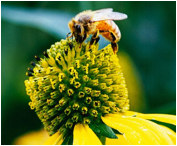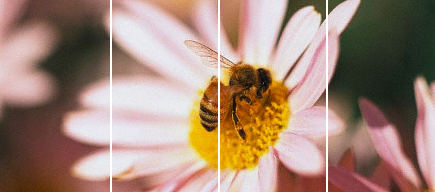 |
 |
Important News regarding the labelling of Honey
(September 14 2005)
The European Commission interpretative note on the legislation of the labelling of honey opens important perspectives for innovation in the market, both in terms of the definition of honey itself and for the obligation of the producer to clarity, when providing important information to the end-consumer.
The document prepared by the European Commission proposes some important issues. In a nutshell, the following are the main points:
Using of the word Honey in the label is prohibited if food substances, such as additives and sugar syrups, were added to the product and for a food compound if the product does not meet the requirements defined by the Directive. In this case, the producer must report the percentage of honey when this is a major ingredient of a foodstuff compound.
Labelling honey with different botanical sources (including Forest Honey) is not prohibited when they reflect a natural botanical contiguity of a territory in a given period.
If instead the presence of honey from different botanical sources and territorial origins depends on artificial processing, the label must indicatethe unambiguous definition of "Blend".
Moreover, honey must be labelled with the country of origin when its region or territory do not make recognizable with certainty the geographical origin of the product in all countries.
The possibility of using qualifying expressions, always verifiable, documented and not likely to mistake the consumer, such as "summer honey", "not pasteurized", "not heated", etc.
And finally, the opportunity to use the word "Millefiori" (i.e. multi-floral, honey produced from different floral sources), but only when the honey corresponds to honeybees crops, "assembled" with a natural process and not by mixing honey from various botanical and/or territorial sources. If that is the case, honey must be defined as "Blend."
In addition to the "classical" features of foodstuffs (net weight, producer, composition, lot, etc.) here's some information that must occur in a label:. |
Geographical origin
In the absence of specific indications of origin, it is understood that the product comes from one of the countries of the European Community. If the origin of honey is wholly or partly non-EU, it must be marketed quoting one of the following phrases: "non-EU honey", "non-EU honey blend',"EU and non-EU honey blend". If the producerwants to emphasize the national origin, he may declare for instance "Italian honey". |
Botanical sources
It is allowed to complete the trade name with an indication of the botanical
origin. Honey coming mainly from a single floral source (mono-floral), may bear such indication in the label ("chestnut honey", "acacia honey", etc.). ,Honey of different floral sources will bear a label indicating "millefiori". Showing the expiration date is not mandatory.
|
|
 |
|


